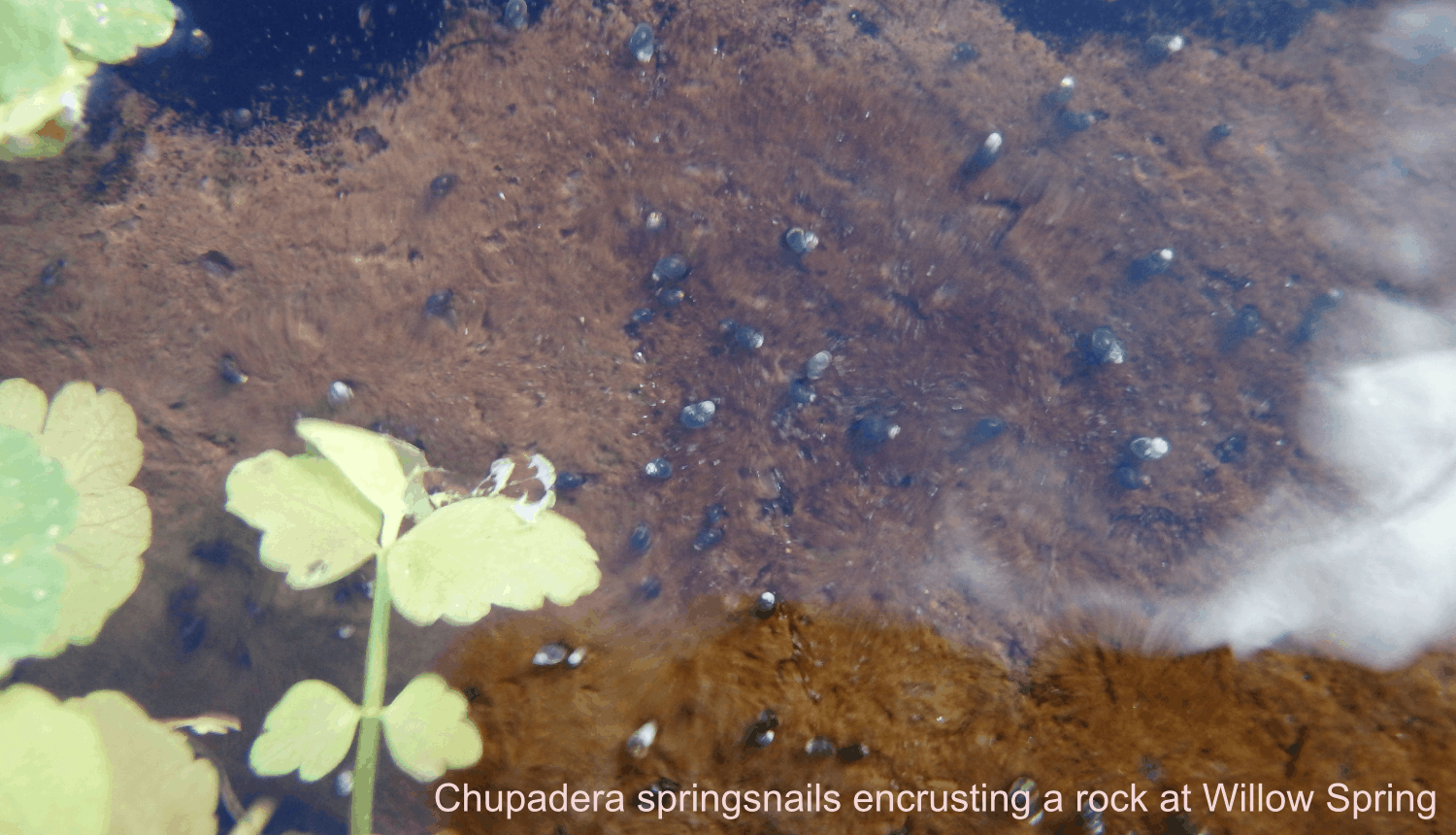
Species
Chupadera springsnail (Pyrgulopsis chupaderae)
Principal Biologist(s)
Dustin Long
Project Location
Willow Spring, NM
Conservation Problem
Endangered by habitat loss and degradation of aquatic resources, particularly decreases in spring flow due to drought and ongoing and future groundwater pumping in the surrounding area, habitat degradation from livestock grazing, and springhead modification.
Conservation Status
The US Fish and Wildlife Service (USFWS) designated the snail as a candidate for protection under the Endangered Species Act in 1984, and listed it as endangered in 2012. Critical habitat was designated at Willow Spring and a nearby unnamed spring in 2012, although it is unlikely that snails currently exist at the unnamed spring. The species is categorized as a Species of Greatest Conservation Need (SGCN) in the Rio Grande watershed in New Mexico’s Comprehensive Wildlife Conservation Strategy.
Project Goals & Objectives
Our goal is to implement a comprehensive conservation and recovery program for this species. An important component of this project will be for us to work at the interface between the private landowner and the USFWS to achieve conservation benefits for this species. Initially, we aim to
– Formalize a Memorandum of Understanding (MOU) between Turner Endangered Species Fund and the owner of Willow Spring to allow access to the site
– Conduct comprehensive biotic and abiotic surveys at Willow Spring
– Organize a Chupadera springsnail Recovery Planning Meeting at the Ladder Ranch in New Mexico, bringing key partners and stakeholders together to synthesize a conservation strategy for the species and to begin developing a species recovery plan
– Work in partnership with New Mexico Department of Fish and Game and the U.S. Fish and Wildlife Service to assemble a captive breeding and holding facility for Chupadera springsnails on the Ladder Ranch
– Attempt to identify spring sites on the Ladder and Armendaris ranches with habitat characteristics capable of supporting Chupadera springsnail (this will be informed by data gathered from survey work at Willow Spring described above
– Potentially translocate Chupadera springsnails to new sites if deemed warranted by the Recovery Team
Project Background
The Chupadera springsnail (CSS, Pyrgulopsis chupaderae) is a small (2 – 3 mm tall) freshwater snail that is endemic to Willow Spring and a nearby unnamed spring. The CSS is highly endemic and is considered imperiled given the limited extent of (0.5 to 2 m wide x 38 m long) and potential threats to occupied habitat.
Habitat, water quality, and CSS abundance data were collected at Willow Spring in 1997-98 by NMDGF biologists (B. Lang, personal communication, 2013). These data suggest that the species survives only on rhyolitic gravels within a relatively stable range of water quality parameters, which were summarized in the Determination of Endangered Status for the Chupadera Springsnail and Designation of Critical Habitat prepared by the US Fish and Wildlife Service (77 FR 41088). However, an updated, regular, and long-term habitat monitoring program would better define the habitat conditions required for CSS persistence.
Access to Willow Spring for the purpose of CSS monitoring has been restricted since the current owners purchased the property in 1998. TESF is in the process of negotiating an access agreement to conduct conservation work on behalf of CSS at Willow Spring. In its current form (subject to revision prior to official signature), the agreement will allow TESF long-term access to the Willow Spring site for the purpose of CSS conservation.
